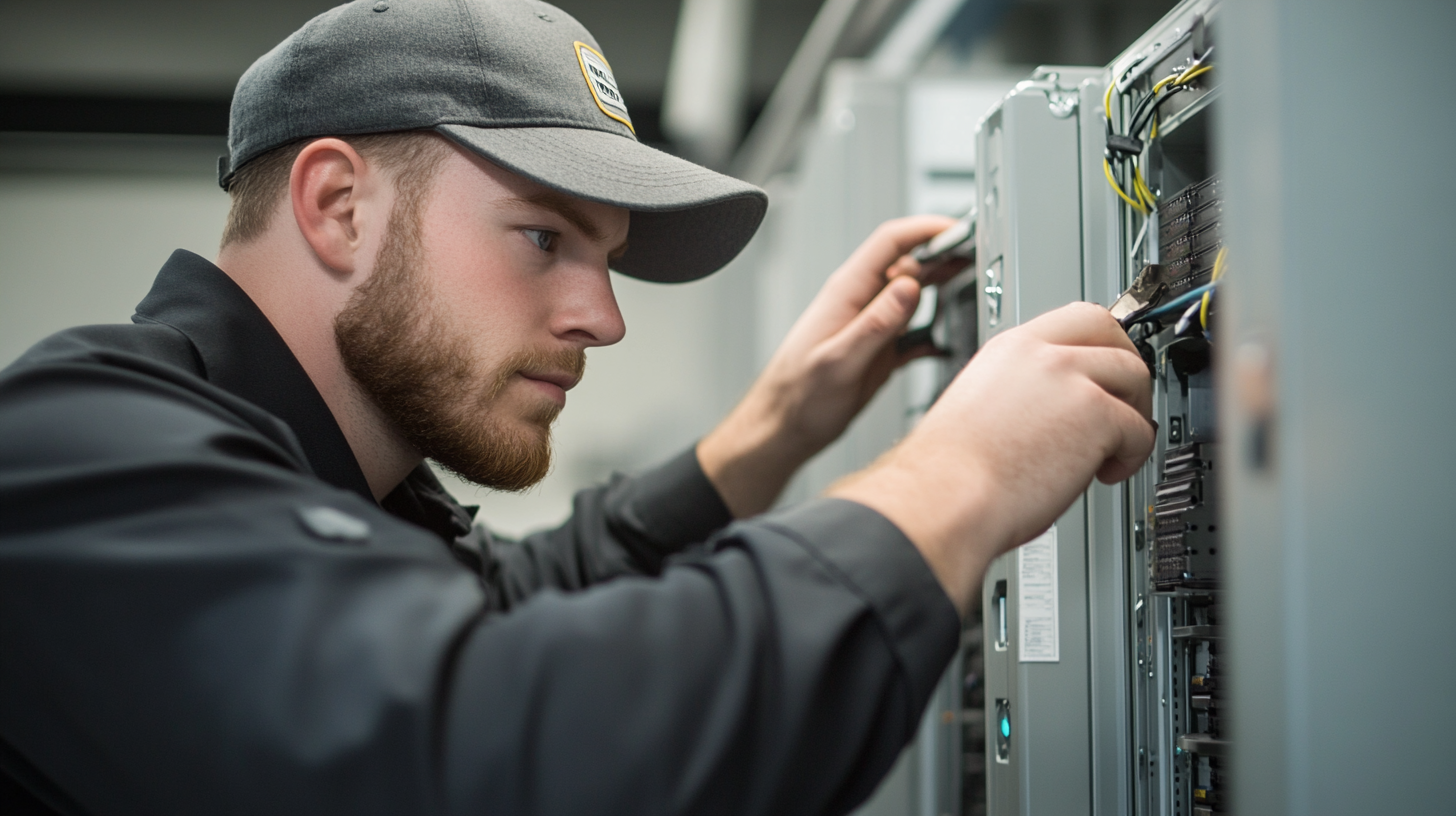The Secret High-Tech HVAC Tools Pros Don’t Want You to Know
-
 By
Michael Haines
By
Michael Haines
- Dec 31, 2024

By Mike Haines 12/31 Over the years, I’ve watched the HVAC industry evolve from simple analog gauges to the most sophisticated digital instruments imaginable. These new tools allow us to be more precise, more efficient, and more confident in our work—which ultimately benefits every customer we serve. In the not-too-distant past, HVAC technicians relied on manual gauges, thermometers, and rough estimates to diagnose system issues. While those methods worked well enough in many situations, they sometimes led to guesswork—especially when it came to subtle problems like small refrigerant leaks or minor blockages in the duct system. That’s where today’s high-tech tools come into play. Equipped with digital displays, wireless connectivity, and even cloud-based data storage, these gadgets have revolutionized how the HVAC trade operates.
The Rise of Digital Tools in HVAC
Consider wireless manifold gauges, for example. Traditional manifold gauges can be unwieldy, requiring technicians to remain right next to the equipment. Modern digital versions often link up to a smartphone or tablet, sending real-time data directly to an app. This means a professional can stand at the condenser outside while simultaneously keeping an eye on interior conditions. It’s a game-changer for diagnosing more complex issues, such as those found in larger homes or commercial buildings.
Key Highlights
- Digital instruments pinpoint leaks and inefficiencies with unmatched precision
- Wireless gauges and sensors streamline real-time data collection and troubleshooting
- High-tech upgrades reduce guesswork and speed up repair times
From Infrared Cameras to Advanced Leak Detectors
One of the most dramatic shifts in HVAC diagnostics has been the use of infrared (IR) cameras. Instead of dismantling walls or crawling through tight spaces to trace duct pathways, technicians can now scan an area for hot or cold spots that might indicate a leak or insulation failure. An IR camera provides a colorful temperature map, making it quick and relatively effortless to spot trouble areas like gaps in ductwork or poorly insulated corners of a home.
Meanwhile, advanced leak detectors have grown increasingly sensitive—capable of picking up even trace amounts of refrigerant. Given that refrigerant chemistry and environmental regulations have changed drastically over the last couple of decades, technicians need a reliable way to ensure systems are tight and compliant. Modern detectors often come with digital displays that show the parts-per-million (ppm) concentration, plus audible alarms that grow more frequent as the sensor approaches the leak. These features not only save time but also prevent further damage to the system by ensuring that the problem is located and addressed swiftly.
Technician’s Workflow
Before these tools became widely available, identifying a poorly performing compressor or an imbalanced airflow sometimes took hours of trial and error. Technicians would have to measure temperature splits manually, walk from indoor to outdoor units, and rely on intangible experience to make the right call. While hands-on knowledge remains invaluable, modern high-tech instruments add a layer of clarity that simplifies and shortens these processes dramatically.
For instance, say a tech is investigating a drop in cooling capacity in a multi-story home. With a thermal imaging camera, they can immediately spot areas of lost airflow or uneven duct temperatures. A digital psychrometer can then measure humidity levels to see if moisture buildup is part of the equation. All this data is often compiled in an app or cloud platform, which can then generate a detailed report for both the technician and the homeowner. This level of insight wasn’t even on the radar for most residential HVAC pros a decade ago.
Accuracy and Data Logging
One of the major benefits of going digital is the ability to log and store diagnostic information. This is a far cry from the days of scribbling pressures and temperatures in a notepad while standing next to a condenser in sweltering heat. Technicians can now upload data to a secure server or even email it to a customer, providing transparent evidence of what was tested and why certain repairs might be needed.
Data logging also assists in long-term maintenance. Imagine a commercial building in which multiple technicians rotate duties. By using shared digital platforms, everyone can access the same historical logs, quickly noting if an issue was previously addressed or if a certain area has been flagged repeatedly. This not only saves time but also ensures continuity and accountability. In the residential context, a homeowner can look back at service records and see how their system’s performance has changed over time, which is especially helpful for warranty claims or insurance purposes.
Smart HVAC Integration
A big part of high-tech tools involves connecting systems to the broader Internet of Things (IoT). For example, advanced thermostats now “talk” to sensors in the ductwork and even integrate with whole-home energy monitoring systems. Some products allow an HVAC tech to remotely monitor a client’s unit (with the homeowner’s permission), sending alerts if the system deviates from normal temperature or pressure thresholds.
This shift toward interconnected systems is especially useful for property managers and commercial clients. A facility in downtown Chicago, for example, might utilize an IoT-based platform that monitors temperatures and humidity levels on multiple floors, automatically scheduling a technician when unusual data trends pop up. This predictive maintenance approach can prevent emergencies—like a failed air conditioner during a scorching heat wave—by catching small problems early. Such advanced notice also allows building managers to plan and budget for repairs instead of scrambling at the last minute.
Coast to Coast
Technicians in the bustling HVAC market of Houston, Texas, often deal with punishing heat and high humidity. To keep up with the sheer scale of installations and repairs, many companies in the region have adopted wireless manifold gauges en masse. These tools let them work quickly in the field, diagnosing refrigerant levels under the most oppressive summer conditions without dragging around heavy hoses or returning indoors every five minutes to consult a gauge.
Meanwhile, in the suburbs of Denver, Colorado, an HVAC firm specializing in older homes integrates infrared cameras into virtually every inspection. The older architecture in areas like Capitol Hill sometimes conceals labyrinthine ductwork that has been patched over the decades. With a quick thermal scan, the technician can confirm whether that brand-new insulation job is actually preventing heat loss—or if it’s all just hype. Clients are often amazed when shown the color-coded IR images, and it builds trust when they can visually see where improvements are needed.
Training and Learning Curves
Of course, adopting new technologies can be intimidating—particularly for techs who’ve mastered the “old ways” of diagnosing issues. In some cases, a lack of proper training might lead to confusion, potentially causing more harm than good if an instrument’s calibration is off. That’s why many of these high-tech manufacturers offer robust training materials: online tutorials, in-person workshops, and certification programs.
An experienced technician might scoff at the idea that a thermal camera could reveal anything they don’t already know, but once they see how it pinpoints duct leaks or hidden insulation failures, skepticism often melts away. The key is to ensure everyone on the team understands not just how to read the digital displays but also how to interpret the data in context. A digital gauge might show precise pressure readings, but it takes expertise to know whether those readings truly indicate a failing compressor or just a minor coolant adjustment.
Cost vs. Return on Investment
For smaller HVAC businesses or one-person operations, the upfront cost of some advanced tools can be daunting. A high-end thermal camera, for instance, can run well into four figures. However, many of these tools pay for themselves by reducing labor hours and improving diagnostic accuracy. Instead of multiple return visits, a technician can identify and solve the problem in one go. This efficiency translates to happier customers and the ability to handle more service calls in a day.
Moreover, presenting high-tech solutions often enhances a company’s professional image. When a homeowner sees that you’re using top-tier instruments, they’re more likely to view your service as state-of-the-art and worth a premium rate. The trust factor skyrockets when you can provide visual or digital proof of an issue instead of expecting the client to take your word for it. All of this plays into a healthier bottom line and a stronger reputation in the marketplace.
Overcoming Common Misconceptions
One might assume that high-tech HVAC tools are too fragile or complicated for everyday use. While early generations of digital equipment had some reliability issues—perhaps going blank in extreme temperatures or losing calibration too easily—modern products are far more rugged. Many are sealed against moisture, rated for high temperatures, and designed to withstand the jolts and vibrations of a typical day’s work in the field.
Another misconception is that these tools replace the need for deep HVAC knowledge. In reality, they complement it. A digital leak detector can tell you there’s a refrigerant leak, but it’s still up to a skilled tech to fix that leak properly and verify system pressures align with manufacturer specs. Similarly, a thermal camera might reveal a hidden draft, yet understanding how that draft interacts with the home’s overall airflow pattern is a task for a well-trained professional. Technology accelerates and enhances the process, but expertise remains irreplaceable.
Opportunities for Further Innovation
Looking ahead, it’s clear that the HVAC sector will continue to evolve alongside tech trends. We can anticipate even more powerful IoT-based sensors that track not just temperature and humidity but also air quality parameters like VOCs (volatile organic compounds) and fine particulate matter. Some manufacturers are already experimenting with wearable tech—imagine a heads-up display in safety goggles that shows real-time temperature gradients or system pressures hands-free.
We might also see AI-driven tools that aggregate data from thousands of systems to predict the next likely failure point, alerting technicians days or even weeks before the problem manifests. While these developments may sound futuristic, they’re not that far off, given how quickly the HVAC landscape has changed in just the past decade. For those who embrace innovation, the rewards can be substantial: faster diagnoses, fewer callbacks, and a reputation for being on the cutting edge.
Collaborating with Other Trades
High-tech HVAC tools don’t exist in a vacuum. Builders, electricians, plumbers, and energy auditors also rely on many of these advanced diagnostic methods for their own work. For instance, a builder checking for thermal bridging or compromised insulation might conduct a scan with an IR camera, then coordinate with the HVAC team to address airflow concerns in problem areas. Electricians might use similar equipment to check for overheating in breaker panels, which can also indicate poor ventilation in certain spaces.
This collaborative environment opens the door for more holistic building solutions. Rather than each trade operating independently, they can share data and arrive at a plan that genuinely optimizes a building’s overall performance. It’s not uncommon to see multi-disciplinary teams on large projects in cities like Dallas, Texas, or Charlotte, North Carolina, using shared cloud-based platforms where everyone can comment on the IR scans or leak detection results, ensuring each fix aligns with the broader project goals.
Final Thoughts
In an industry where timeliness and accuracy can make or break a job, the influx of high-tech HVAC tools is nothing short of revolutionary. Devices like digital manifold gauges, infrared cameras, and advanced leak detectors have minimized the guesswork, streamlined repairs, and improved overall system performance. More than ever, technicians can diagnose complex issues with speed and precision, all while providing transparent data to their customers.
And as we stand on the cusp of a new year, there’s no better time to consider upgrading your toolkit. Prices may rise once the calendar flips, and modernizing your instruments can pay dividends throughout 2024 and beyond. Whether you’re a seasoned HVAC contractor or a newcomer eager to make a strong impression, embracing the latest in diagnostic technology can solidify your reputation as a forward-thinking professional. At the end of the day, these high-tech solutions aren’t just gadgets—they’re the linchpin to delivering a better, faster, and more reliable service to clients, ensuring homes and businesses stay comfortable no matter the season.

 and now, NASCAR Racing Sponsor
and now, NASCAR Racing Sponsor










